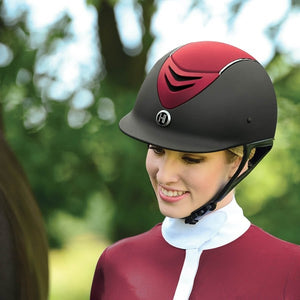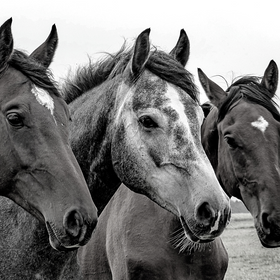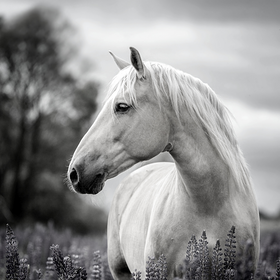
Trail Safety 101
Trail riding can be an exciting way for you to explore scenic trails and experience the beauty of nature with your horse. However, as a horse lover, you know that inherent risks are involved whenever you ride. It's essential to know trail safety tips to ensure a safe and enjoyable experience for all involved. The following are some important trail safety tips for horseback riding.
Wear a Helmet
Always! Regardless of your experience level, protecting the head is crucial for any rider. A helmet can protect your head from serious injury, or even death, in the event of a fall. Ensure the helmet fits properly and securely fastened before getting on your horse.
Inspect Your Tack
Before heading out on the trail, ensure all your tack and riding equipment is in good condition. Check the saddle, stirrups, girth, and reins to ensure they are all in good condition. If you notice any damage or wear and tear, replace or repair the equipment before using it.
Know Your Horse’s Temperament
Every horse will react differently to what you encounter while trail riding. Knowing your horse's behavior in various environments is important before heading out on the trail. For example, if your horse is easily spooked, you'll want to avoid riding on trails with lots of wildlife or other potential distractions.
Choose a Suitable Trail
When choosing a trail, think about your skill level, the terrain, and the length of the trail. If it’s your horse’s first time out, it would be wise to go with a shorter, more straightforward trail. If you're unsure how your horse will behave, be cautious and choose an easier trail.
Ride with a Friend
Riding with others is both safer and more fun. In case of an emergency, you'll have someone to help you. Additionally, riding with a buddy can help calm nervous horses and reduce the risk of spooking.
Stay Alert
Be aware of your surroundings by keeping your eyes and ears open while riding on the trail. Be mindful of other riders, hikers, and wildlife. If you see other riders or hikers, slow down or stop to let them pass. If you encounter wildlife, give them plenty of space and avoid disturbing them.
Stay on the Trail
Make sure to stay on the designated trail while riding. This helps preserve the natural environment and prevents erosion. Riding off-trail can also be dangerous, as you may encounter unexpected obstacles or uneven terrain.
Keep Distance
Maintaining a safe distance between you and other horses is essential. Horses can be unpredictable and may spook or kick if they feel threatened. Stay at least one horse length apart from other horses to reduce the risk of accidents and injury.
Have an Emergency Plan
To be safe on the trail, you must know what to do in an emergency. Before heading out, familiarize yourself with basic first aid and know what to do in an emergency. This includes knowing how to call for help in a serious emergency.
Practice Good Horsemanship
Good horsemanship is essential for trail safety. This includes maintaining a balanced and secure seat, using proper rein and leg cues, and being attentive to your horse's needs. Good horsemanship can help prevent accidents and keep you and your horse safe on the trail.
Following these trail safety tips can reduce the risk of accidents and enjoy a safe and enjoyable trail ride!





